The following slides introduce apraxia and presuming competence to adults who support nonspeaking Autistic children. You will find links to further your learning throughout this article.
A downloadable PDF of the slides is available at the bottom of this post.
The information throughout this post primarily comes from Communication for Education‘s new course for educators and communication partners, which I highly recommend.
My own opinions are written in italics.
Remember, these slides are simply an introduction for parents and educators. Continue your education by visiting the links beneath the final slide.
As we shift away from stereotypical behaviorist views of nonspeaking Autistic children, we can finally put current brain science into practice.
This better understanding of the mind-body connection will help us interact more respectfully with the children we support, and plan more appropriate educational opportunities.
You can find a list of nonspeaking advocates to follow on NeuroClastic’s Nonspeaker Directory.
What Is Apraxia?
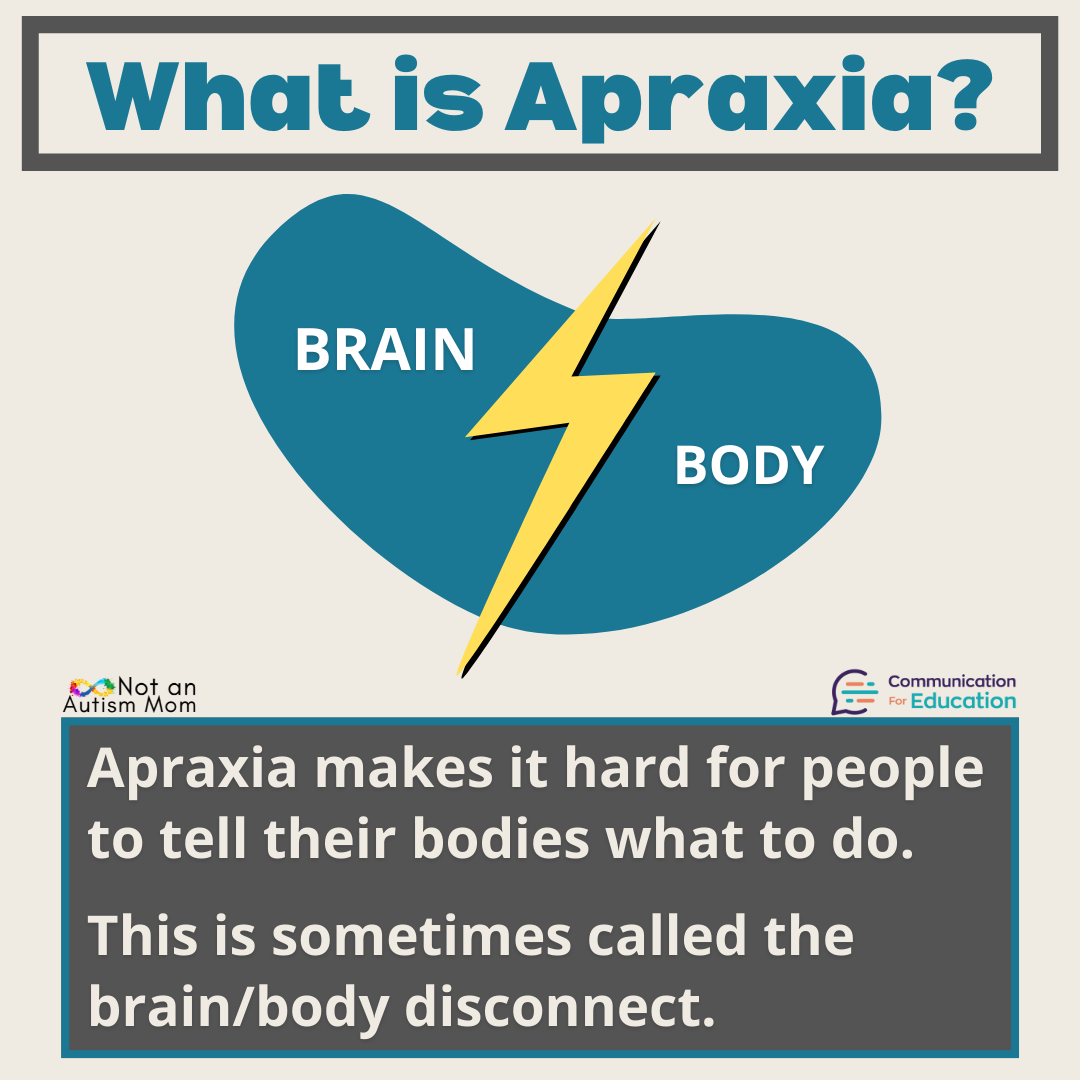
Apraxia makes it hard for people to tell their bodies what to do. This is sometimes called the brain/body disconnect.
A person may want to do one thing, and the body does something else.
We often mislabel these movements as intentional behaviors, when they are actually rooted in a person’s central nervous system. When we know better, we can do better for our children.
The Difference Between Apraxia and Dyspraxia
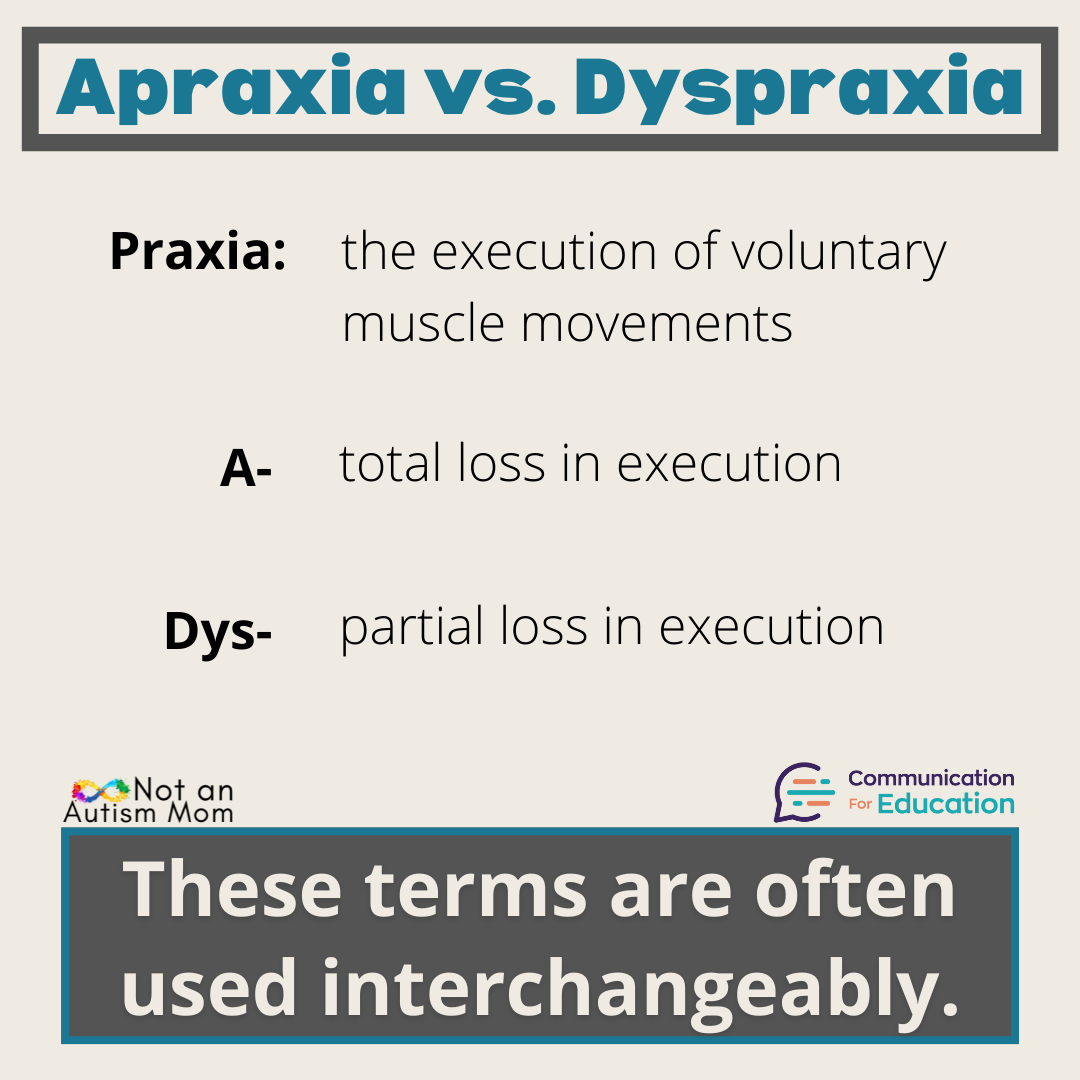
The terms apraxia and dyspraxia are often used interchangeably.
Apraxia means a total loss in the execution of voluntary muscle movements.
Dyspraxia means a partial loss in the execution of voluntary muscle movements.
As parents and educators, our focus should not be on which term is more accurate. Our focus should be on how we can best support and empower the person experiencing this loss of execution.
Types of Apraxia
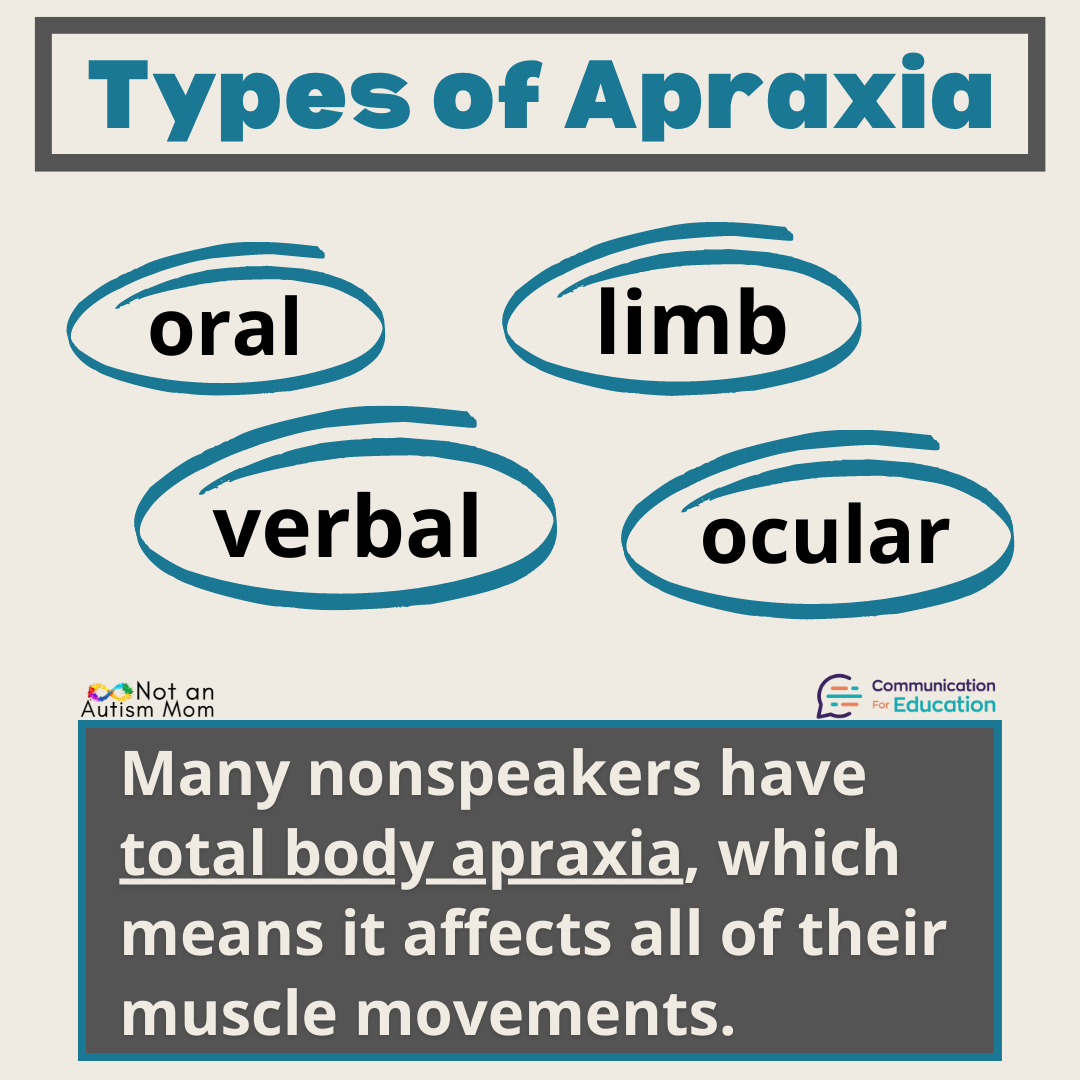
Oral apraxia impacts movements of the mouth, such as chewing and smiling.
Verbal apraxia impacts speech production.
Limb apraxia affects movements like getting dressed, skipping, and pointing.
Ocular apraxia impacts purposeful eye movement.
Many nonspeakers have total body apraxia. This means apraxia affects all of their movements.
A Closer Look at Apraxia of Speech
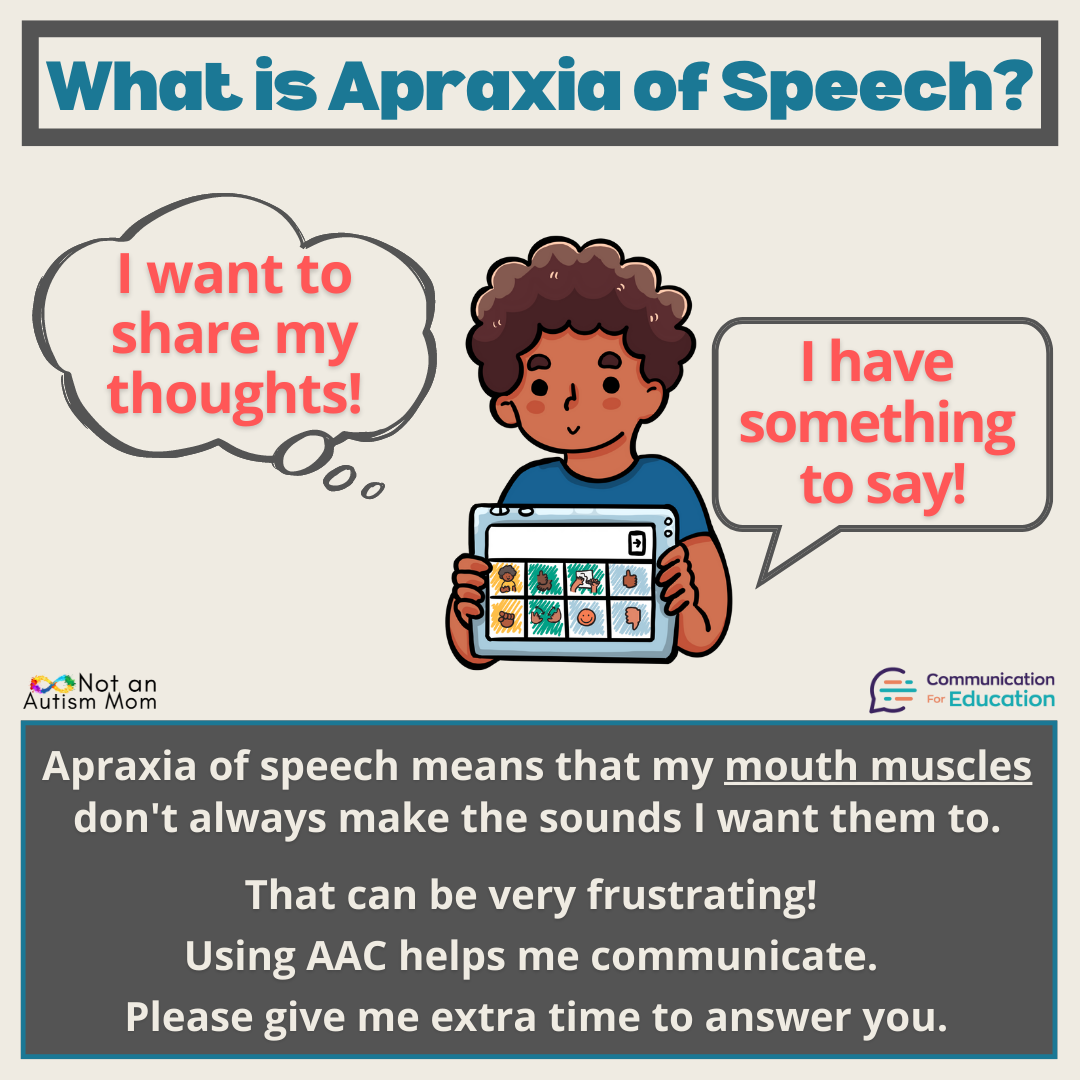
Nonspeaking does not equal nonthinking.
Apraxia affects motor control. It is an issue of performance, not cognition. As educators, we must keep this distinction in mind when assessing our nonspeaking students.
Our standard instructional model of teach – practice – assess – remediate or move on, may be ineffective for students who cannot perform in a way that proves their understanding.
Consequently, many nonspeaking students are placed in segregated settings and/or given simple, remedial tasks instead of age-appropriate instruction.
*Children with atypically developing speech should be given an assistive technology assessment as early as possible.
Communication is a human right, and all communication is valid. Click here for more information about AAC (alternative and augmentative communication).
Apraxia and Presuming Competence
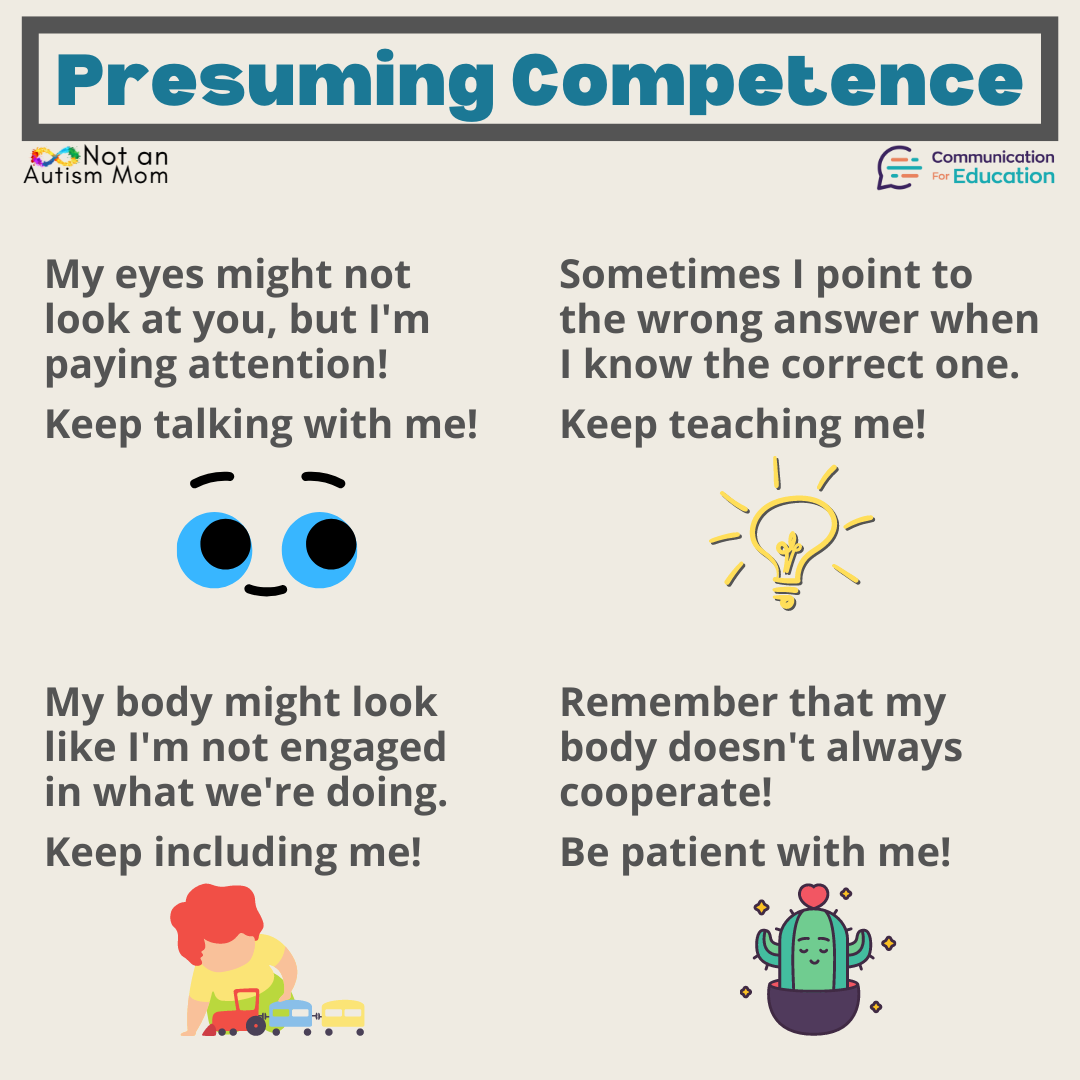
Presuming competence means believing that apraxic students are capable of learning anything. It does not mean we should assume they already know the information.
Presuming competence is the least dangerous assumption to make.
If we presume incompetence, and it turns out in twenty years that we were wrong, we will have caused immeasurable damage by withholding education and opportunities.
You can learn more about adapting age-appropriate curriculum for students with complex communication needs in Reach Every Voice’s self-paced Accessible Academics Course. I highly recommend it.
Links to Further Learning

Top 10 Things You Should Know About Apraxia According to a Nonspeaker – Philip Reyes
Six Things You Should Know About Apraxia – William Tziavaras
Leaders Around Me Рedited by Dr. Edlyn Pe̱a
This is Not About Me (60 Minute Film) – Jordyn Zimmerman
Reach Every Voice – Accessible Academics Course
Communication for Education – Course for Educators
Beyond Behaviors – Dr. Mona Delahooke
Autistically Inclined – Sprout Grow Flourish
Download Slides
Open-access educational resources are important to me. Feel free to use these slides in handouts and as a part of your own presentations.
Please do not alter the images.
Thank you to the following organizations who helped me with these slides, and continue to collaborate with me: Communication for Education, Communication First, Autistically Inclined, Autistic Strategies Network, Reach Every Voice
Since you’re still reading, allow me to digress…

Children who have apraxia are often misjudged by the movements their bodies make. We label these movements behaviors, and tend to focus on correcting those behaviors, instead of supporting their sensory-motor needs.
When their eyes look away, we assume they aren’t paying attention. When their legs walk away, we label them as avoidant (whatever that means).
When their bodies fall to the floor, we assume they’re being noncompliant. When their arms hit the table or throw a toy, we label them as aggressive.
Why is it that we assume the worst about our children?
When we learn from nonspeaking people directly, we discover that our assumptions are often inaccurate. Current brain science, including the Polyvagal Theory and the brain/body disconnect, confirms what nonspeaking Autistic people are telling us.
Unfortunately, our educational system lags behind, leaving teachers and parents with outdated, unhelpful information.
But all is not lost!
You can find a list of nonspeaking advocates to follow on NeuroClastic’s Nonspeaker Directory.
If you’re interested in learning more about AAC and inclusion, join us for one of our monthly small group sessions!
To request an informational and engaging workshop on AAC and inclusion for your school team, contact me at notanautismmom @ gmail dot com.
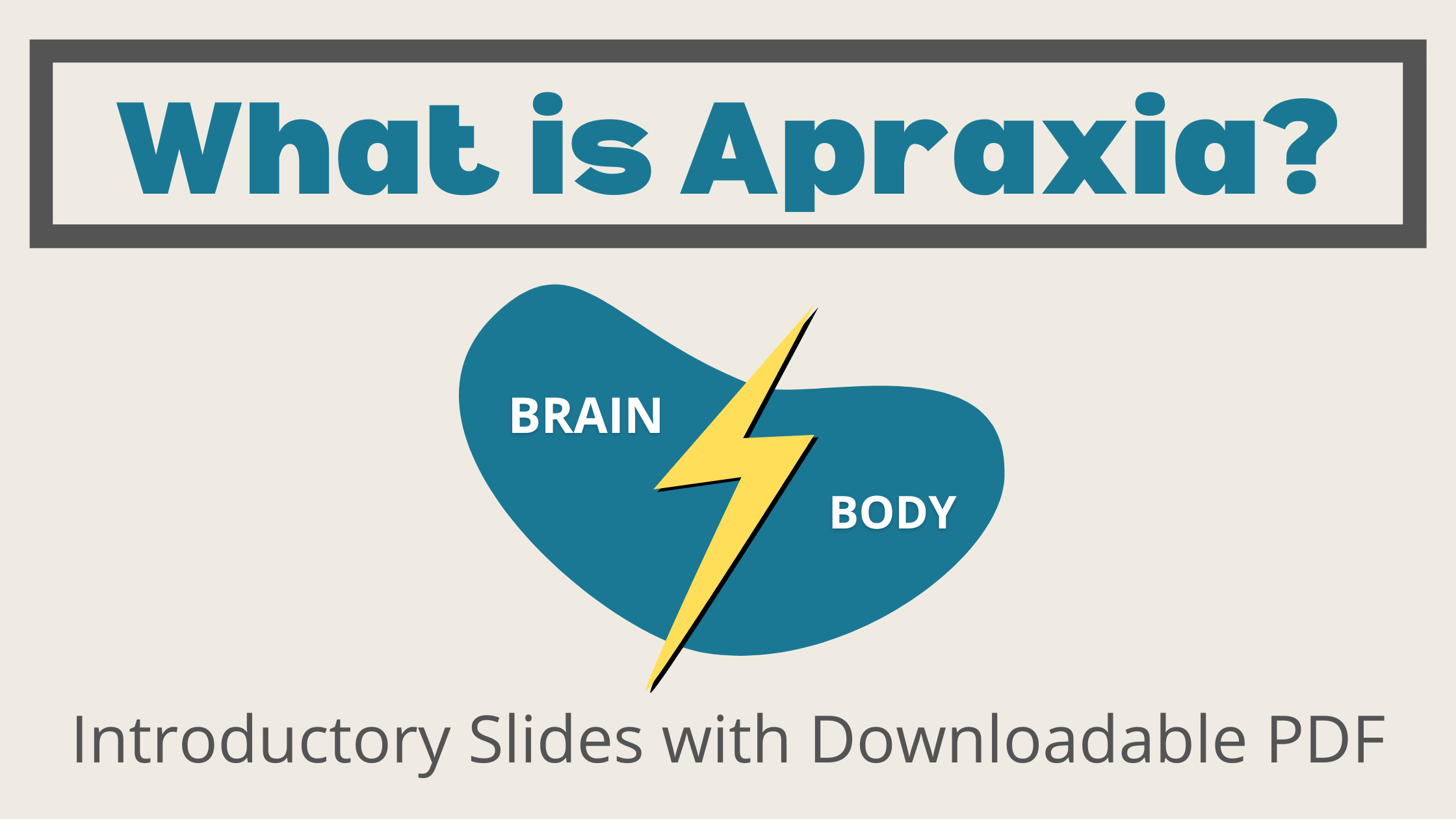

2 replies to "An Introduction to Apraxia and Presuming Competence"
[…] An Introduction to Apraxia and Presuming Competence – Includes a printable PDF of slides […]
Hi Meghan:
there is another Nonspeakers List on the #ActuallyAutistics blog – the one from An Autism Observer.
https://anautismobserver.wordpress.com/2022/08/12/non-speaking-autistic-bloggers/
there may be a separate list for those living with apraxia and dyspraxia – or those can be relatively easily searched.
Terrific organisations and resources and I appreciated the digression.